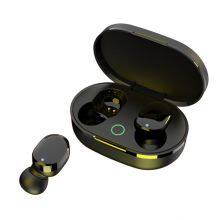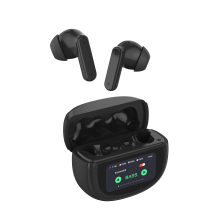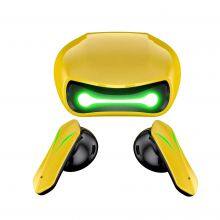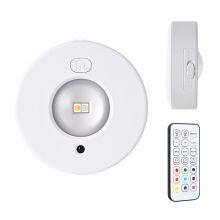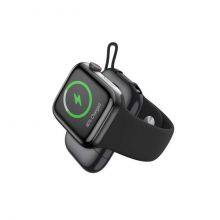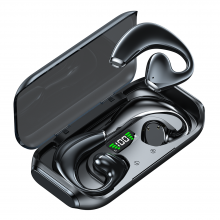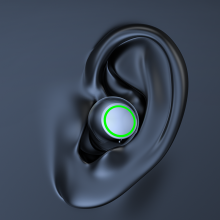The ever-evolving traits of the digital age have created a paradigm shift for advertising and screen technology with LED displays. The LED displays have become commonplace, from spectacular billboards shining in the mellow, busy city streets to high-resolution screens adorning personal gadgets. Considered highly versatile, cost-efficient, and beautiful, these displays are the first choice for many industries such as retail, media, and entertainment. As we consider the detailed aspects of LED display technology, we will discuss how it works, its types, and the potential it possesses for future innovation.
LED display technology is at the core of modern visual communication. Using light-emitting diodes, these displays provide a very bright, energy-efficient, and long-lasting light source for various purposes. Unlike LCD screens, which require backlighting, LED displays are bright and offer superior color vibrancy, as each diode emits its light. Whether for outdoor advertising or indoor retail, LED displays stand out for their distinction and seamless incorporation with the environment. They integrate well with the environment because they can be installed either in indoor or outdoor settings, thus affording operational flexibility and wider applicability.
The LED display is a screen that uses a panel of light-emitting diodes for the production of images and video content. These displays are immensely bright and reproduce colors vividly, so indoor or outdoor applications are considered ideal. OLED screens, for instance, emit light through organic compounds, whereas LED displays emit light through inorganic materials, which increases their durability and performance. Being able to provide clear visuals across a wide range of lighting conditions under daylight has ensured the popularity of LED screens in digital advertising, retail display applications, and building video walls.
Multiple LED arrays are organized into a matrix on an LED screen to form a picture or video display. Each pixel on the screen has three LEDs: red, green, and blue (RGB). By swiftly alternating the brightness of intensity of these individual LEDs, one can create the whole spectrum of colors. Unlike conventional projectors that must rely on an external light source, LED displays maintain their resolution and high refresh rate on their own. This makes for a very smooth, non-flickering visual experience that acts as a pleasure to watch, whether one is playing some games or using it for digital signage.
There are a variety of kinds of LED displays intended for different applications. Outdoor LED displays have a weatherproof design and provide high brightness for optimal visibility. Indoor LED displays are used for advertising and digital signage and prioritize color accuracy and resolution. Flexible LED displays give you a creative edge by allowing you to curve and conform the display to a unique space. Transparent LED displays are considered the best because of their ability to keep the background visible, which is perfect for retail environments. These options highlight the diversity of LED technology in terms of meeting different operational needs and installation requirements.
In the fast-changing world of retail, LED digital signage stands as one of the most prominent instruments used to engage consumers and increase sales. Since LED displays use vibrant colors and are very bright, they are perfect for the display of products and commercial information. Retailers use the advantage of being able to change their display at any time, thus facilitating their marketing strategy along with a seasonal trend. Through LED video walls and flexible LED displays, immersive visual experiences can be created that grab the attention of customers competing in a highly fierce market. The easy installation of LED technologies also contributes to a great retail environment, making the entire shopping process more interesting and interactive.
Outdoor LED displays have truly changed the advertising world as they offer prime visibility and impact. These are weather-resistant, high-resolution screens that maintain the quality of their images for purposes of billboard and digital signage. LED advertising stands bright and clear even in direct sunlight, thus making the greatest impact on the masses. Using updated control systems, one can dynamically update advertisements to tailor them to specific audiences, possibly depending on times of day. This particular advantage, along with LED technology's environmentally friendly feature, makes outdoor LED panels one of the most charismatic and sustainable media to address the large population.
Indoor LED screen solutions allow businesses to provide the options needed for better internal communication or customer engagement. The advanced LED technology delivers superior brightness and color accuracy to the displays that find diverse applications, such as in conference rooms, store displays, and on-stage entertainment venues. This flexibility allows the LED panels to be creatively installed as curved or transparent screens, blending beautifully into any indoor environment. In addition, the high refresh rate and wide viewing angles keep the images from becoming dull and blurred, allowing indoor LED displays to make visual content vivid and clear to be seen from any perspective. By integrating these digital displays, businesses can develop compelling visual narratives that resonate with their audiences.
When analysing LED displays against LCDs, one of the most significant differences lies in how the illumination occurs. LCDs usually develop an image reliant on backlight sources, whereas in LED displays, the light is generated by the diodes directly. This makes LED displays capable of better brightness and contrast ratios, which has an elegant effect on the viewing experience. LED displays also provide maximized energy savings and have a longer life span, thus promoting green practices to choose from for both indoor and outdoor environments. A further advantage of LED screens is that there is no backlight," meaning thinner and lightweight designs can be achieved.
While OLED displays gain their reputation for strong color retention and deep blacks, LED displays have definite advantages when it comes to durability and brightness. Because LED screens use inorganic materials, they last longer; this also reduces their susceptibility to burn-in, a phenomenon very common with OLED technology. LED displays can also reach a higher level of brightness, making them suitable for outdoor or high ambient light level environments. The robust design of LED panels also ensures that they can be flexibly adapted to large installations under the city skin, such as video walls and billboards, without compromising visual quality.
While fulfilling very different functions, judgment can be made that LED technology offers some very good advantages on resolution and image quality grounds. LED displays, with crisp visuals, therefore, provide high resolution where image quality remains clear on a detailed level, best in all admission of light into outside conditions. Contrarily, image distortion is one of the drawbacks one might usually count against projectors, along with fewer brightness levels, both of which are considered shortcomings of competitive technologies vis-à-vis LED screens. Hence, the seamless setups in many different formats that LED panels can create, from large video wall sizes to flexible displays, allow installation versatility without incorporating any external light sources, further enhancing operation and visual impacts.
The refresh rate is probably one of the most important aspects of an LED display since it governs the clarity and fluidity of motion on the screen. The greater the refresh rate, the more frequently images can be updated, leading to a reduction in motion blur and the feeling of smooth gait. With the fast movements, games and movies essentially demand this. The modern LED displays claim to have great refresh rates and maintain sharpness and immersion for the fastest visuals. Due to this great refresh rate, LED displays also stand out well in professional works like digital signage and so on.
Today, LED displays are manufactured with a very wide viewing angle, so that image quality remains intact regardless of positioning. This is particularly good when displays are being viewed by different people from various angles, in conference halls, or public utilities. With advanced color accuracy, LED displays augment the color gamut, giving the colors in hues of extremely vivid and true-to-life ones to fine-tune. The combination of IPS technology and LED color displays ensures perfect color consistency and viewing angle requirements.
Flexibility given to the LED display opens a new dimension of creative and practical solutions. Flexible LED displays are bendable and curved against paths that unusual spaces would offer to architects and advertisers. The displays maintain high brightness and color faithfully when bent or curved and offer a very smooth visual experience. Curved LED screens are gaining popularity in immersive environments, including gaming setups and virtual reality experiences, where wraparound visuals enhance immersion. The inclusion of flexible LED technology in various industries augments the potential to transform standard display solutions into kinetic installations.
An advertising LED display utilizes light-emitting diodes (LEDs) to create vibrant and eye-catching visuals for promotional purposes. These displays are commonly used in various settings, including outdoor billboards and indoor digital signage. They are capable of displaying dynamic content, which can be easily updated to captivate audiences. The flexibility of LED technology allows for customization in terms of size and shape, making it suitable for different environments. Additionally, many advertising LED displays are eco-friendly, consuming less energy than traditional lighting solutions.
A flexible LED display offers numerous advantages, including the ability to fit various shapes and sizes, which is perfect for unique installations. This type of display can be curved or bent, allowing it to adapt to different environments, such as control rooms or theaters. The lightweight design makes it easy to transport and install, which is beneficial for events or temporary setups. Furthermore, flexible LED displays can deliver high-brightness visuals, ensuring that content remains visible even in bright ambient light. Their versatility makes them a popular choice for both indoor and outdoor applications.
An SMD (Surface-Mount Device) LED matrix enhances visual experiences by providing a higher pixel density, resulting in sharper images and more detailed graphics. This technology allows for a seamless display of content, making it ideal for large screen boards and video walls. With the capability to showcase 3D visuals, SMD LED matrices can create immersive environments that captivate viewers. Additionally, they are compatible with various electronic devices, allowing for easy integration into existing systems. The use of an SMD LED matrix is particularly beneficial in advertising and entertainment sectors, where impactful visuals are essential.
Transparent LED displays offer a unique visual experience by allowing viewers to see through the screen while still displaying vibrant content. This makes them an excellent choice for retail environments, where product visibility is important. They can be embedded into glass structures, blending seamlessly into the architecture. Furthermore, transparent displays are eco-friendly, utilizing energy-efficient LED technology. Their ability to provide high-resolution images without obstructing views makes them widely used in modern advertising strategies. This innovative approach allows brands to showcase their messages creatively without compromising aesthetics.
LED display screens can be customized in various ways to meet specific needs, including size, resolution, and brightness levels. Depending on the application, such as advertising or theater presentations, users can choose from different pixel pitches to achieve desired clarity. Customization also extends to the interface, allowing seamless integration with other technologies and electronic devices. Many manufacturers offer options for unique shapes, allowing for more creative installations. This level of customization ensures that businesses can tailor their displays to effectively communicate their messages in impactful ways.
OLED screens play a significant role in modern display technology, offering superior picture quality with deeper blacks and more vibrant colors compared to traditional LED displays. This technology uses organic compounds that emit light when an electric current is applied, allowing for thinner and more flexible screens. OLED displays are commonly used in high-end televisions and portable devices, providing an immersive viewing experience. Their ability to produce a wide color gamut makes them ideal for applications requiring precise color reproduction. Additionally, OLED technology is becoming popular in advertising due to its energy efficiency and ability to deliver stunning visuals.

